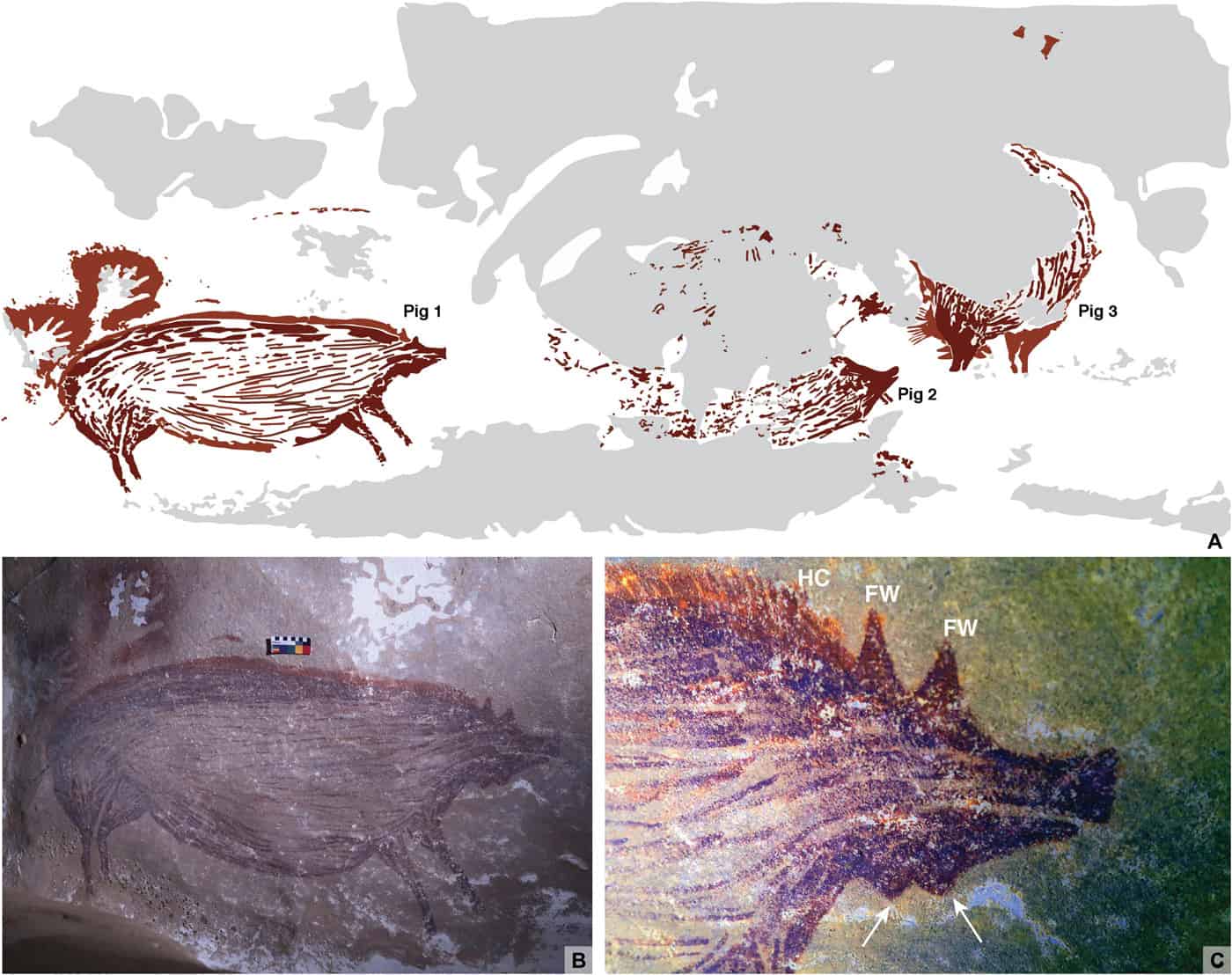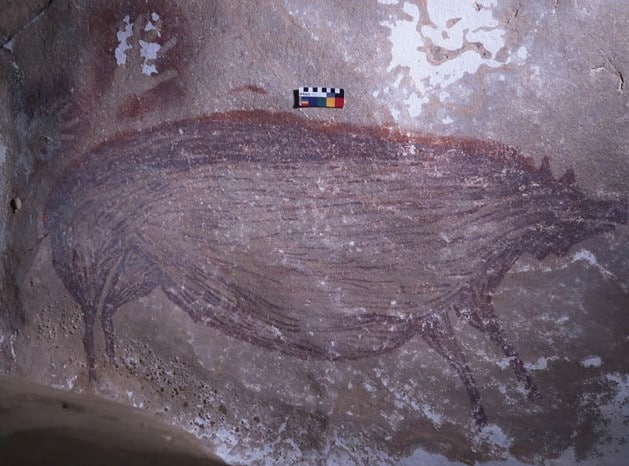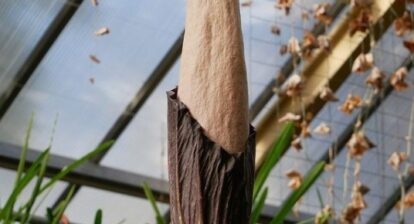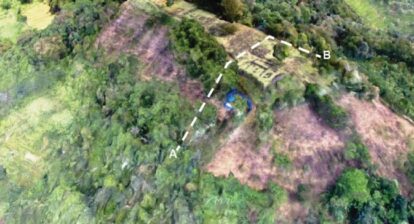Before the invention of writing, Paleolithic humans expressed themselves with prehistoric art – more specifically cave paintings of animal and human figures – some as old as over 40,000 years ago. Rhinocerous adorn the Chavet Caves in France, circa 35,000 years ago. Aurochs (bulls) and horses are seen in the Lascaux cave paintings (17,000 years old) in France. In 2018, even older paintings were observed – over 40,000 (perhaps as old as 52,000) years old – of an unknown animal, in the Lubang Jeriji Saléh cave on the Indonesian island of Borneo. Australia has its own collection of exquisite cave art.
Archaeologists have now found the oldest cave art ever observed by western scientists, once again in Indonesia. It is a life-sized picture of a wild pig, found by doctoral student Basran Burhan (and team) on Leang Tedongnge cave, on the island of Sulawesi in 2017. The finding has been described in Science Advances on Jan 13, 2021, dating the painting to be at least 45,500 years old.
The limestone cave is located in a remote area, probably only seen by the isolated Bugis community, who told the team that it had never before been seen by westerners. The paintings depict a few pigs and the most well-preserved one is that of the Sulawesi warty pig (Sus celebensis), which can still be found in the area and has been hunted for food for thousands of years. The animal, painted with red ochre, measures about 4.5 by 1.8 feet (136 by 54 centimeters) and seems to be an adult male based on horn-like warts on its face. Outlines of two human hands can be seen painted above its rump.

Oldest Cave Painting Depicting a Sulawesi Warty Pig, Sulawesi, Indonesia. Griffith University, Australia /Maxime Aubert
Study co-author Maxine Aubert from Griffith University, Australia identified a calcite deposit that had formed on top of the painting and dated it to be 45,500 years old. The painting is at least that old, representing the earliest presence of modern humans in Sulawesi.
It should be noted that this is actual representational art. The oldest known drawing of any kind made by a human is a 73,000-year-old hashtag painted on a rock flake from South Africa, and there are plenty of hand stencils older than 40,000 years found all over the world.







